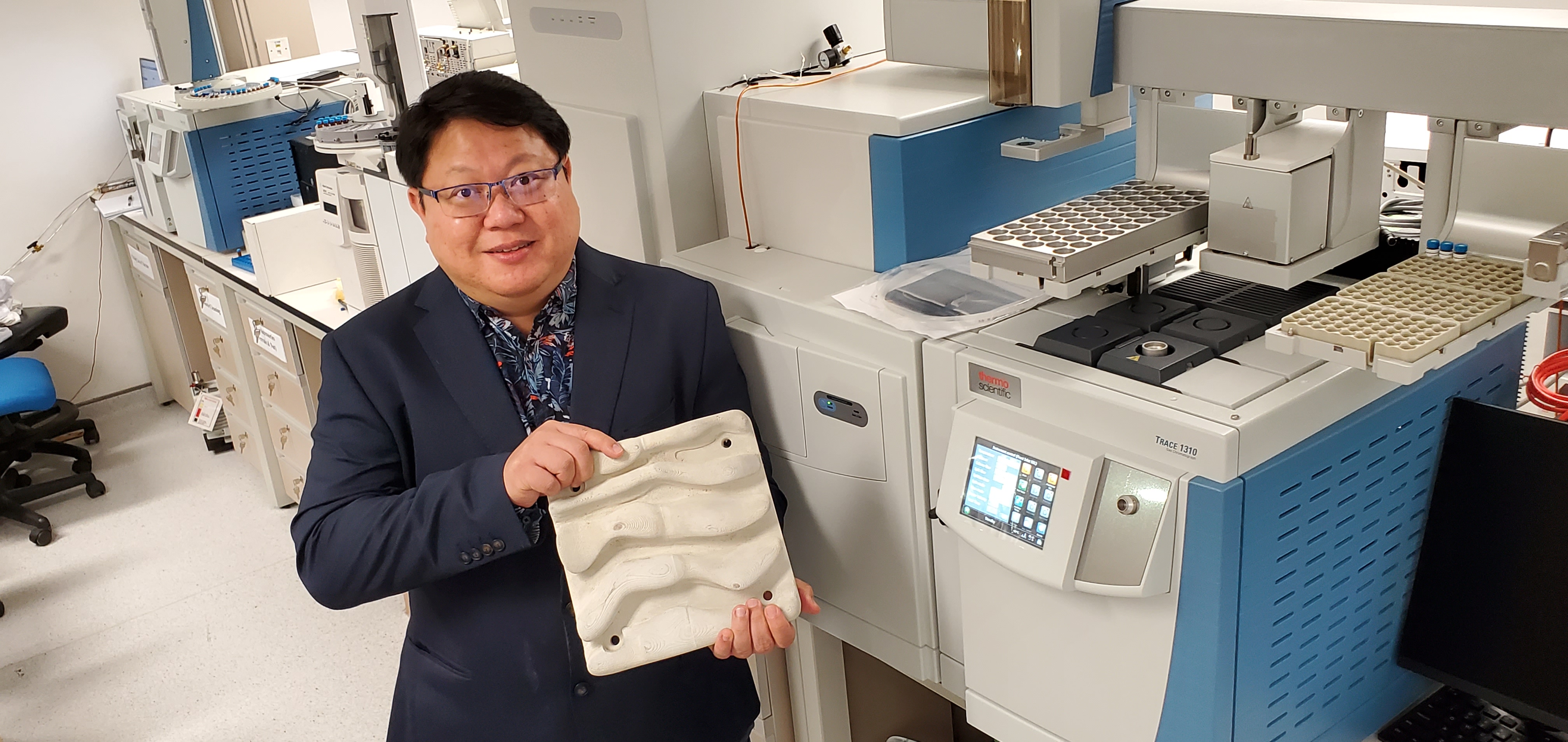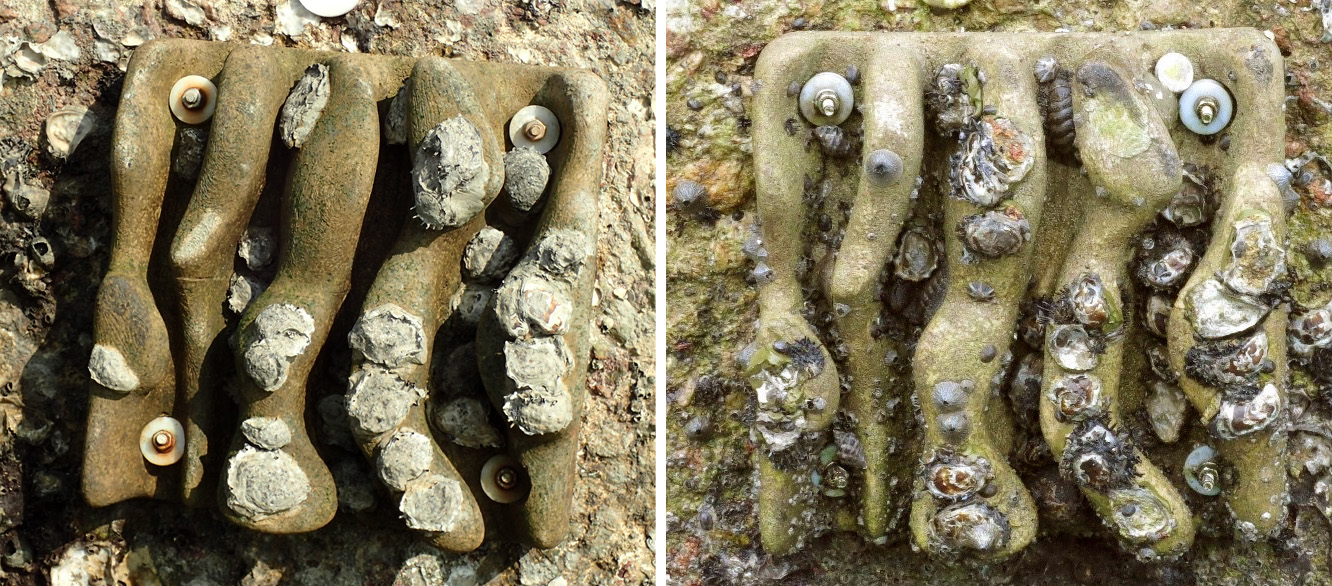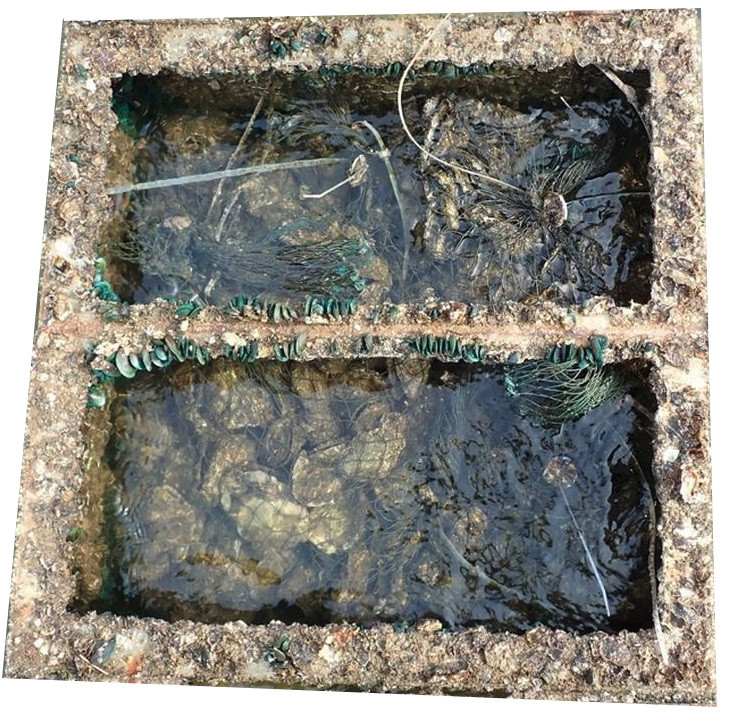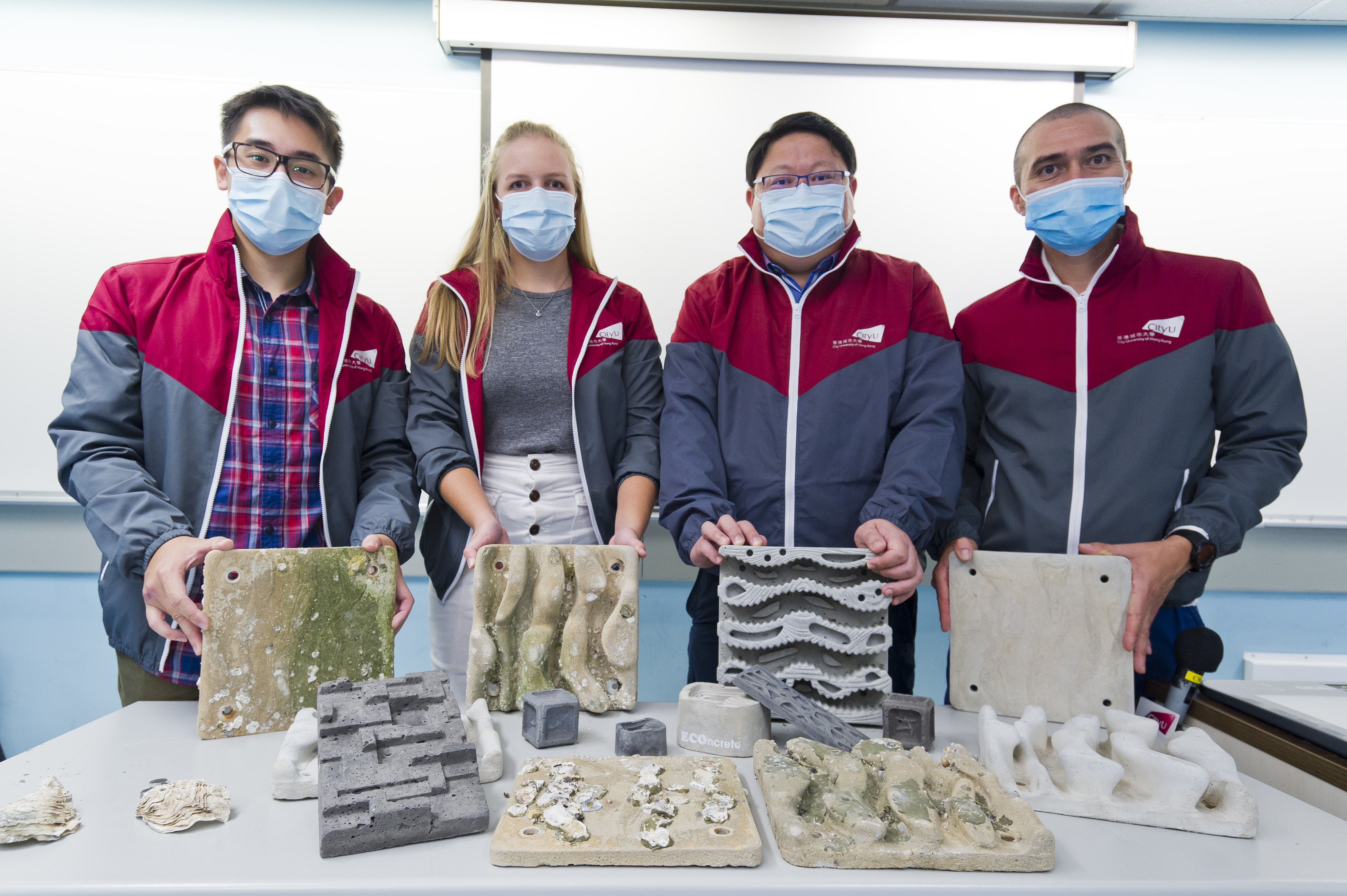Shoring Up The Coastlines - Eco-tiles enhance marine biodiversity on artificial seawalls
Professor Kenneth Mei Yee Leung
Director of SKLMP (CityU)

About 16% of Hong Kong’s coastline is artificial seawalls, which are unfavorable for marine life and weaken the coastal ecosystem. Professor Kenneth Mei Yee Leung, Hong Kong marine ecologist and Director of the State Key Laboratory of Marine Pollution (SKLMP), came up with a clever plan to upcycle the ashes and sediment waste discarded by the Tuen Mun T-Park incinerator to eco-tiles to create a mimic of natural habitat for the existing “concrete seawall”. This strategy not only solves the problem of municipal solid waste in Hong Kong, but also enhance biodiversity. The seawall becomes an ecological corridor, enabling marine plants and animals to be able to grow healthily, providing food for marine life, and can also become a nursery to increase fishery resources.
Eco-engineered tiles before deployment (left) and after 12 months (right). More species like sea snails are found on the tiles after 1 year.
However, he emphasized that having an ecological seawall does not mean that the sea can be filled at will. On the contrary, as 63% of the coastline of the Greater Bay Area have built artificial seawalls which pose varying degrees of impact on the ecological environment, he believes that the technology of eco-tiles can be applied to the Greater Bay Area as a mitigation plan for ecological restoration.
“This is not my specialty, but it seems that fate has chosen me.” Professor Leung specializes in environmental toxicology research for 25 years. At the same time, he has profound experiences in marine environmental research, including pollution, ecology, biodiversity, and water quality management, etc. He recalled that the government conducted a feasibility study on ecological seawalls as early as 2016 and consulted him for advice. At that time, he participated in the “World Harbour Project” to test experimental tiles and deployed them in Hong Kong. He later developed locally designed and made eco-engineered tiles and other fixtures which can be locally fit in Hong Kong’s environment.
Coastal development and reclamation have caused a global increase in artificial concrete seawalls that protect the shoreline from wave action, erosion and flooding. However, the smooth concrete surfaces of artificial seawalls are not inhabitable for marine organisms and can reach extremely high temperatures when exposed at low tide. This makes them unsuitable for many intertidal marine species, including the filter-feeding oysters that improve water quality. The resulting lack of biodiversity weakens the coastal ecosystem.
Professor Leung led a research team to test the effectiveness of eco-engineered tiles in Hong Kong. The team attached the tiles with crevices of different depth to the vertical seawalls in Sham Shui Kok on Lantau Island and Lok On Pai in Tuen Mun in the western waters of Hong Kong for 12-month testing. The experiment brought very positive results as the abundances of marine organisms on the seeded tiles with crevices increased by fourfold compared to flat tiles. Their findings were published recently in the international journal Marine Pollution Bulletin, titled “Provision of refugia and seeding with native bivalves can enhance biodiversity on vertical seawalls”. This paper has been selected and featured by “Environmental Policy Science” of the European Commission, to inform their environmental policy. Combining the principles of ecology and engineering, the experimental tiles were constructed with crevices and grooved surfaces, provided a diversified habitat and shelter for small marine organisms.
As oysters and mussels placed in the oyster baskets feed on micro-algae and organic matters in seawater, they help purify the water body.




